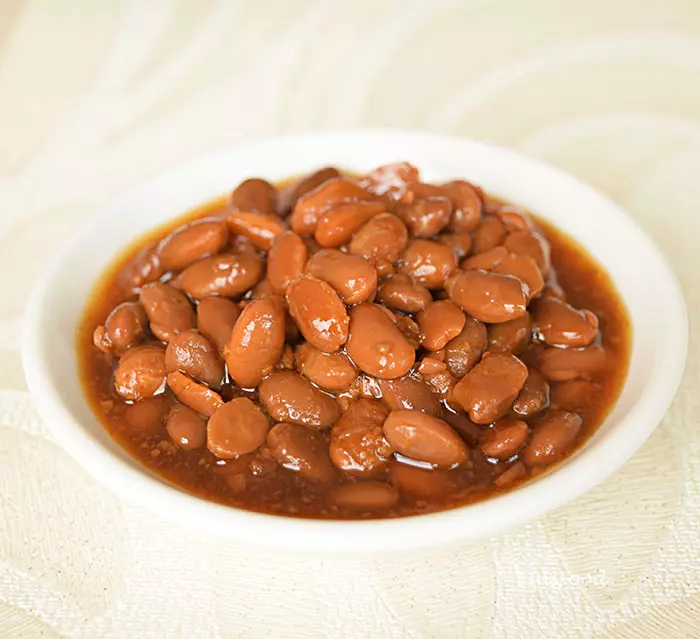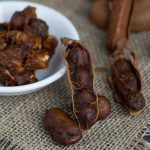Ayam Assam Serani, my mum’s version of the tangy and sour Eurasian and Nyonya dish, Babi Assam, from Singapore and Malaysia. Super easy to cook, and bursting with flavours.
Estimated reading time: 5 minutes

What’s in a Name?
- Ayam = Chicken
- Assam = Sour, also refers to Tamarind
- Serani = Eurasian
- Babi = Pig (Pork)
Ayam Assam Serani = Sour Eurasian Chicken Curry (literally: chicken, sour, Eurasian)
Faham? = Understand?
Ayam Assam Serani Recipe
This was a recipe my mum used to cook quite often. I’ve mentioned before that there aren’t a whole lot of recipes I cook that come from her, as she was always working. So the few that I do have, I treasure.
The original dish is in fact, Babi Assam, as in made with pork, and I believe, may have belonged to the Nyonya community in Singapore and Malaysia. Somewhere along the line, it got claimed by the Eurasians. My mum always made it with chicken, and that’s how I love it best.
Nyonya and Eurasian Recipes
You can read more about the Nyonya and Eurasian communities, as well as find other recipes, on my new-ish blog: Singaporean and Malaysian Recipes.
Their food is a beautiful mix of flavours and spices, the original fusion food, you might say!
We use quite a lot of tamarind in this Eurasian curry, and also finish it off with a touch of vinegar, resulting in a pretty tangy dish. To fully enjoy this sour curry, some plain white rice is best to soak up all that sharp, piquant, yet hearty flavours. A side salad makes a nice complement; a very simple, yet extremely satisfying meal.
Ayam Assam Serani is a very easy recipe to cook, not a whole lot of ingredients to think about, compared to some other Singaporean and Malaysian recipes we have here.

Ayam Assam Serani Ingredients
There are a couple of “pesky” ingredients, as I like to call them, but I sound like a broken tape recorder (who even has those anymore?), go online folks. Pay the p&p, and you can get anything online! Let’s take a look at our ingredients.
The Chicken
I always use a mix of chicken portions for curries and stews. A certain amount of chicken fat lends amazing depth to this Eurasian curry, and so I use a mixture of thighs, drumsticks and breasts, with the breasts chopped up, and skin on the drumsticks.
But that’s a personal preference; I love chicken thighs, my kids love the breasts. You can use just breasts if you want to go leaner, and skinless. Or use a whole chicken, chopped up, if that’s what you do.
Tamarind
Click here to read more. Tamarind is a tropical fruit that grows as a pod on the tamarind tree. The pod or fruit is shaped like a bean and contains a pulp with lots of seeds. This pulp is usually mashed with water to create “juice” that is extensively used in many cuisines around the world for its souring properties. Vinegar is a great substitute.
In this recipe, for the amount of tamarind suggested, substitute 2 Tbsp of clear vinegar.
If using shop bought ready paste, use the same amount, that is, 4 Tbsp of the ready made juice/paste from the jar.
Shrimp Paste (Belacan in Malay)
Click here to read more. Shrimp Paste is made from fermented ground shrimp, sun dried and either sold as a soft paste as in the picture, or cut into blocks. Shrimp paste, or belacan in Malay, is sheer umami.
Leave it out of the recipe if you can’t get it. It is an ingredient that is fairly often left out when making Babi Assam.
Salted, Fermented Soy Beans (Taucheo)
Click here to read more and for substitutions. Taucheo are salted, fermented soy beans, and should easily be found in Oriental stores and definitely online. They lend an earthy flavour and depth to recipes.
You can omit it in this recipe, many people leave taucheo out when cooking Babi Assam. The result is still a wonderfully rich and tangy curry.
The word “taucheo” is of Chinese origin, I would guess that it’s Hokkien (a southern Chinese dialect). Correct me if I’m wrong. However, we all use it, including the Indonesians; it’s one of those local words that has long been adopted by all races in Singapore and Malaysia. Born and bred Singaporeans and Malaysians!
Like the word shiok (yummy, awesome).


How to Use Taucheo (Salted Fermented Soy Beans)
Ingredients
- Taucheo, as required by the recipe
Instructions
- As the fermented soy beans are very soft, they don't need much to break down. Just mash them with a fork, if not using a chopper.
- Add to the recipe according to instructions.

Lemongrass (Serai in Malay)
Click here to read more. As the flavour is concentrated in the thicker bulb end, we only use the bottom half of the lemongrass stalk. In the recipe card below, I say bruised lemongrass: using the back of a knife, pound hard on the bulb to lightly smash it. This releases the essential oils and flavour. Use as directed.
When a recipe calls for the lemongrass to be pounded or chopped, it’s always best to slice the lemongrass in thin rings first, only the bottom half, as mentioned. This is because lemongrass is very fibrous, and slicing it first makes for easier chopping/pounding.
I believe that is all that we need to bother about, in making this curry. If you love trying out different types of curries, you will just love this one!
Shall we get our aprons on?
And if you like the recipe, don’t forget to leave me a comment and that all important, 5-star rating! Thank you!
Lin xx

Ayam Assam Serani (Sour Eurasian Chicken Curry)
Ingredients
- 1 kg chicken portions
- 1 large onion sliced in rings
- 2 lemongrass stalks bottom half, bruised
- 4 Tbsp tamarind pulp or sub with 2 Tbsp clear vinegar
- 250 ml water
- 2 Tbsp vegetable oil
- ½ tsp salt
- 1 tsp clear vinegar
- small handful fresh coriander cilantro, finely chopped – optional
Paste Ingredients
- 2 large onions quartered
- 1 lemongrass bottom half and sliced in rings
- 1 Tbsp shrimp paste belacan – omit if unavailable
- 2 Tbsp salted soy beans taucheo – omit if unavailable
- 2 fresh red chillies
- 1 tsp turmeric powder
Instructions
- Place all the paste ingredients into a chopper and chop to a paste. Set aside.
- Using your fingers, mix the tamarind pulp with the water, if using pulp. Strain into a bowl using a medium mesh sieve. Or using your fingers, pick out all the seeds and any fibrous bits and lose them, keeping the tamarind paste aside until needed.
- Heat the oil in a large saucepan on medium high heat and sauté the onion rings for 1 minute.
- Add the lemongrass stalks and fry for 30 seconds, then add the paste and fry for 2-3 minutes until you get a strong aroma of the paste.
- Add all the chicken portions, and coat thoroughly with the spice paste.
- Add the tamarind paste and salt, mix thoroughly and bring back to a boil. Lower the heat right down and simmer for 45-60 minutes until the chicken portions are fully cooked. The time will depend on the size of your chicken portions.
- When the chicken is fully cooked, add the vinegar, stir, then check the seasoning. It should be perfect, but add more salt, if you think it needs it. You should have a thick curry with a full on flavour. If you like more sauce, add a little more water, perhaps 60-125ml (¼-½ cup), stir, and bring back to a simmer.
- Scatter the fresh coriander (cilantro) if using and serve with rice.

I made this recipe its perfect with white rice everybody loves it.Thank you so much for sharing this recipe
Hi Cristina, I’m pleased to hear that, and it’s a pleasure.
Well, I made this yesterday for dinner here in Singapore and everyone loved it. I also 2, using this recipe, one with chicken and one with pork. Everyone loved both curries. Thank you, Azlin, first time I’ve made this old, traditional recipe. Going to make it again next weekend for friends.
Hey Natalie, that’s really great to hear. I’m glad you and your family enjoyed both the chicken and the pork versions!
Thank you, this looks just like the sort of curry I would enjoy. Cheers Azlin!
A pleasure, thanks for taking the time.
This is great, going to show the missus this recipe, she’s going to love it. Thanks.
Thank you, Gareth, let me know what you guys think.
Thank you so much for this recipe! I’ve been a subscriber since I saw your beef smore last year on facebook. I made that, and it was delicious! I’ve made your Curry Debal too, again, really yummy. I really love all these Eurasian recipes you post about! Keep it up!
Thank you, Nicola. I’m glad you are enjoying the recipes, let me know if there is anything you’d like to see. x
Wow, this is really great. I remember my mom making babi asam all the time when we were young. Do I use the same ingredients to make babi asam?
Hi Kevin, yes, you do. Let me know what you think.